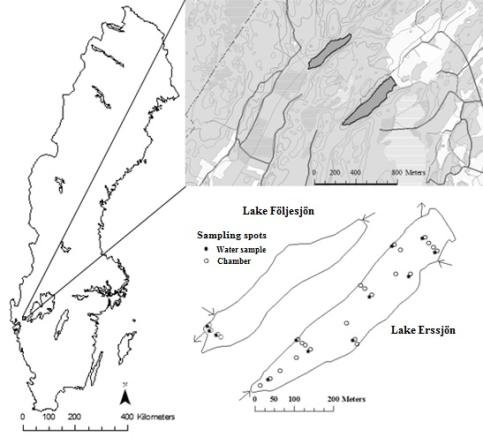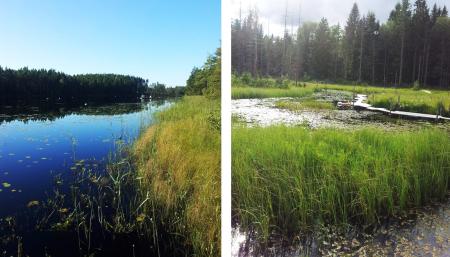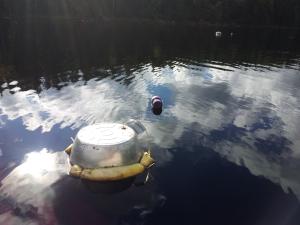Study sites

Lake Erssjön Följesjön
Area (ha) 6.2 3.8
Mean depth (m) 1.7 0.5

Manual sampling

The CH4 emissions were measured using floating chambers made of plastic buckets (0.077 m2, 7489 mL) covered in aluminum tape to reflect the sunlight and heat. The chambers edges were submerged about 3 cm into the water, styrofoam was attached on the sides as a collar to make it float properly under different weather situations. In Lake Erssjön, plastic bottles were used to anchor the chambers, in Lake Följesjön no anchors were used instead the floating chambers were attached to the nearby boardwalk.
The floating chambers in Lake Erssjön were spatially placed in depth dependent transects. The spots were placed in seven transects with 2-4 spots in each, at depth interval of 0-1 m, 1-2 m, 2-3 m and >3 m. In Lake Följesjön one transect with four spots were chosen. Deployment time for the chambers lasted for either 24 or 48 hours.
Complementary measurement variables
All complementary measuerments were taken at a fixed spot in both lakes, every third week if nothing else is mentioned.
- Air samples before/after chamber deployment
- Water temperature (At every chamber)
- O2 (% and mg/l)
- Water samples
- CH4 concentration (spatial distributed)
- Ammonium (NH4)
- Nitrate (NO3)
- Phosphorus (P)
- Nitrogen (N)
- Dissolved organic carbon (DOC)
- Depth profiles in Lake Erssjön
- CH4 concentration
- O2 (% and mg/l)
- Water temperature
- O2 continuously every 15 minutes in Lake Erssjön
- Weather continuously every 30 minutes
Responsible for this page:
Director of undergraduate studies Biology
Last updated:
05/14/15
